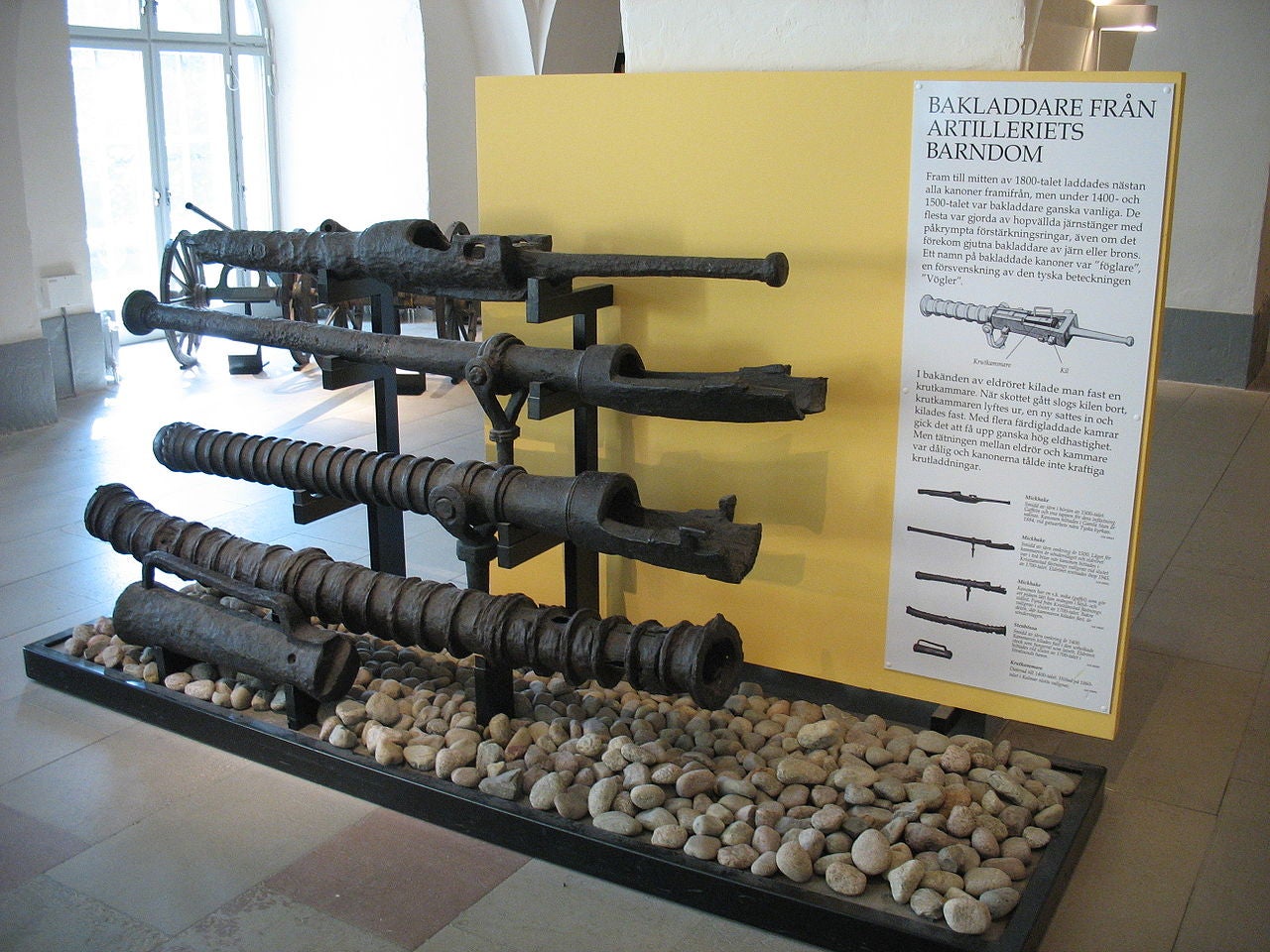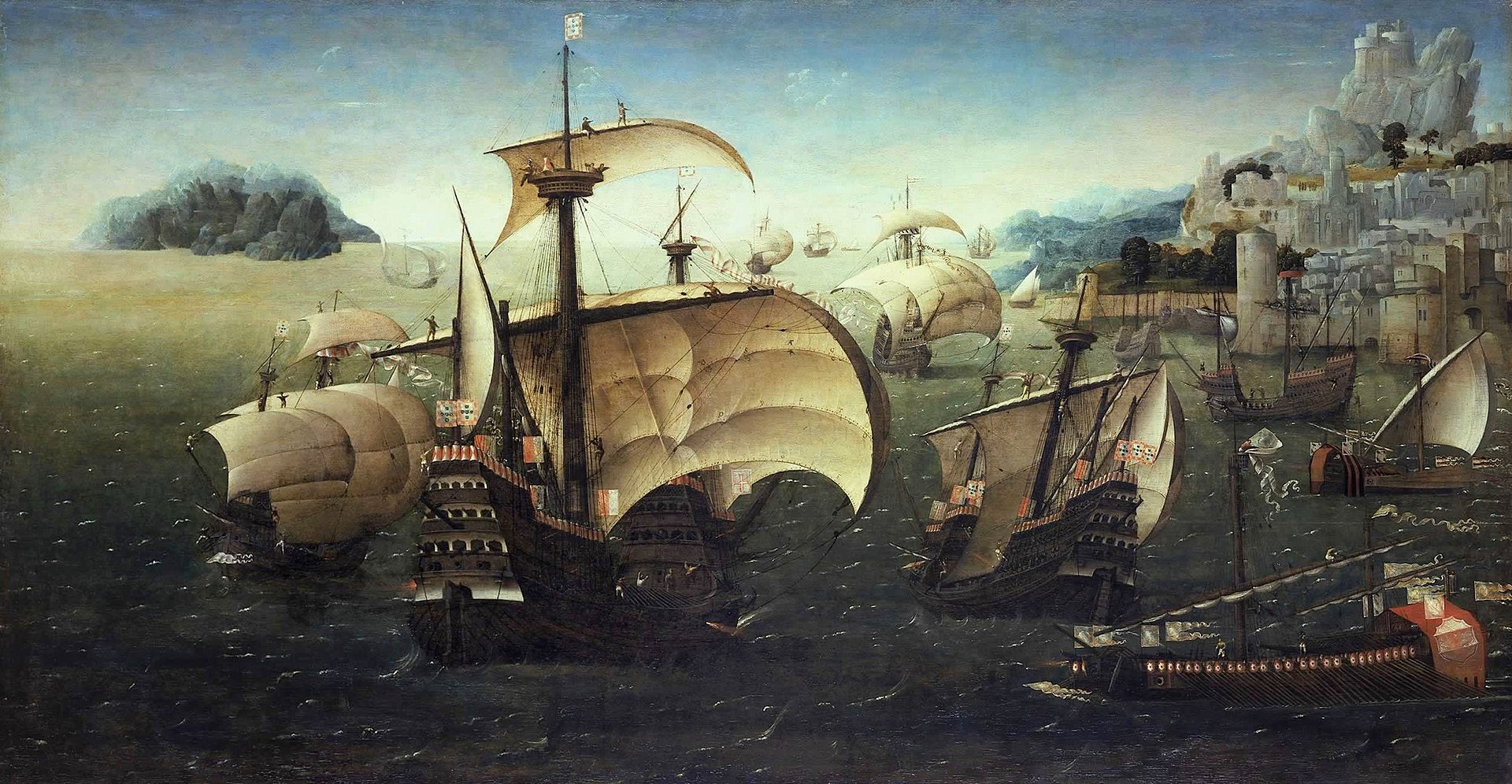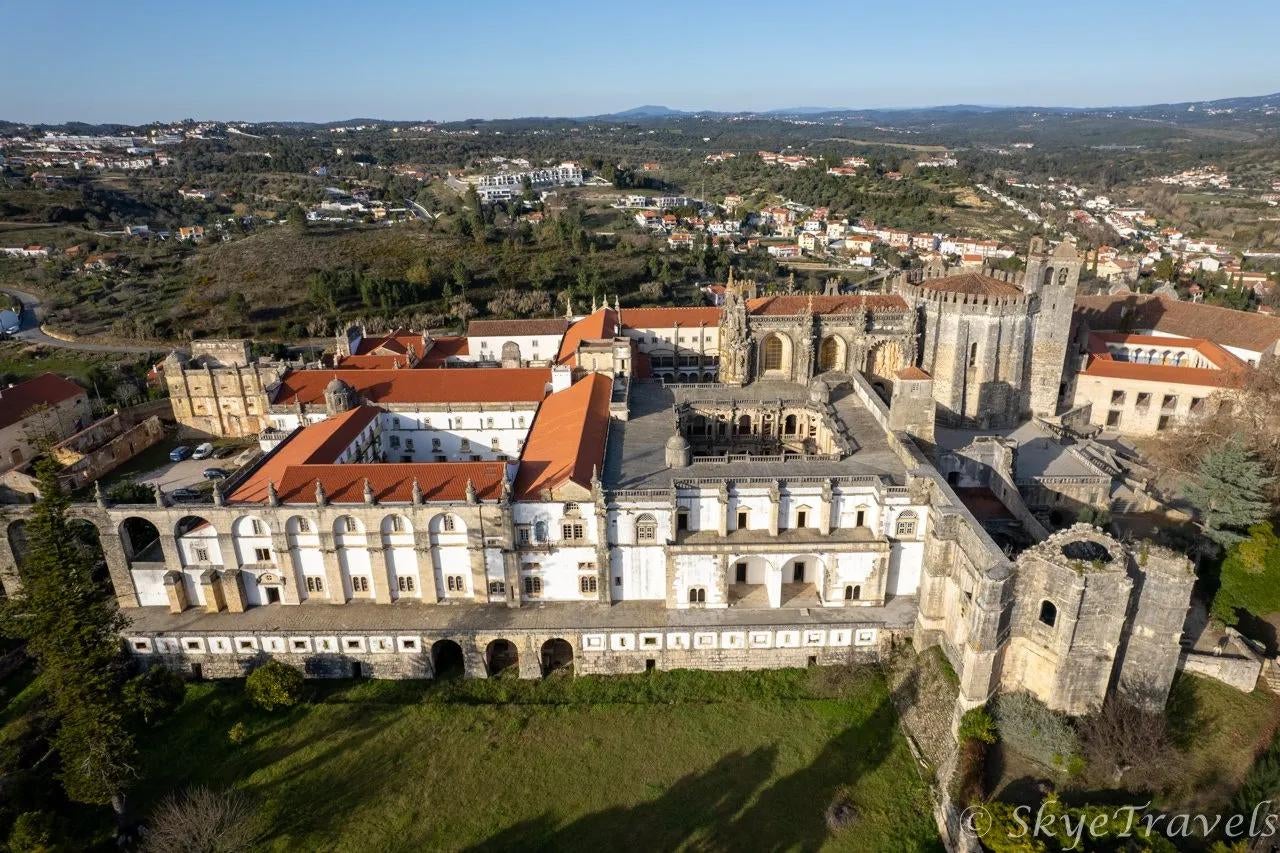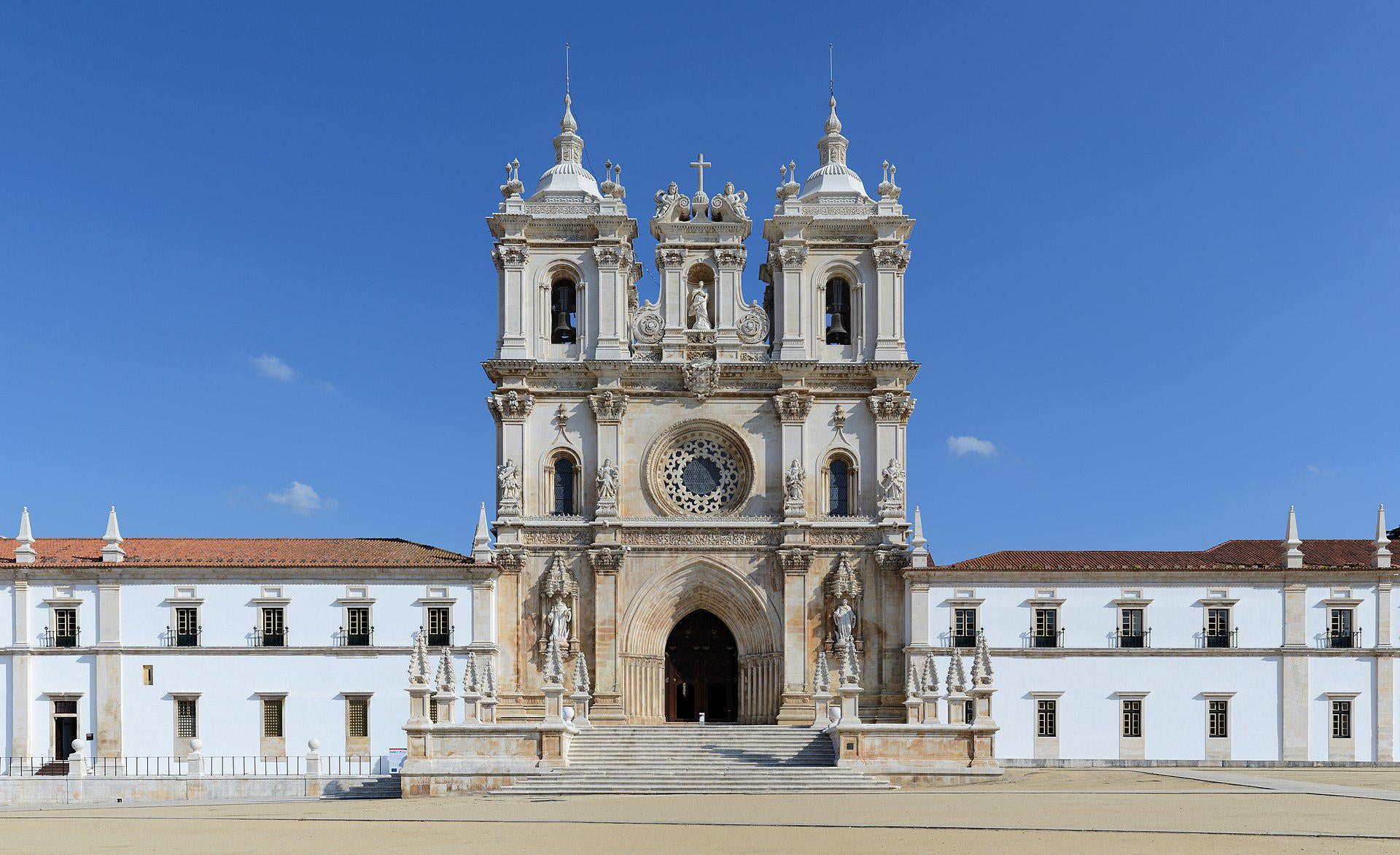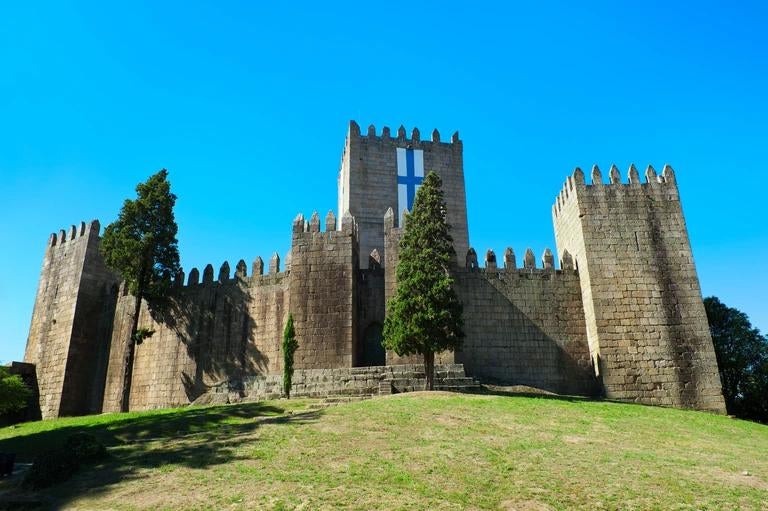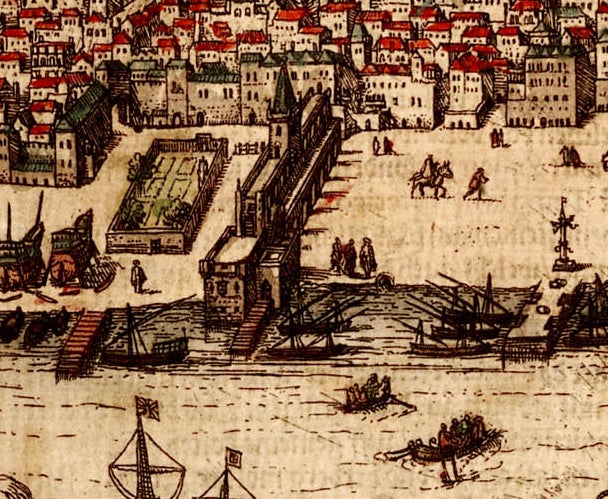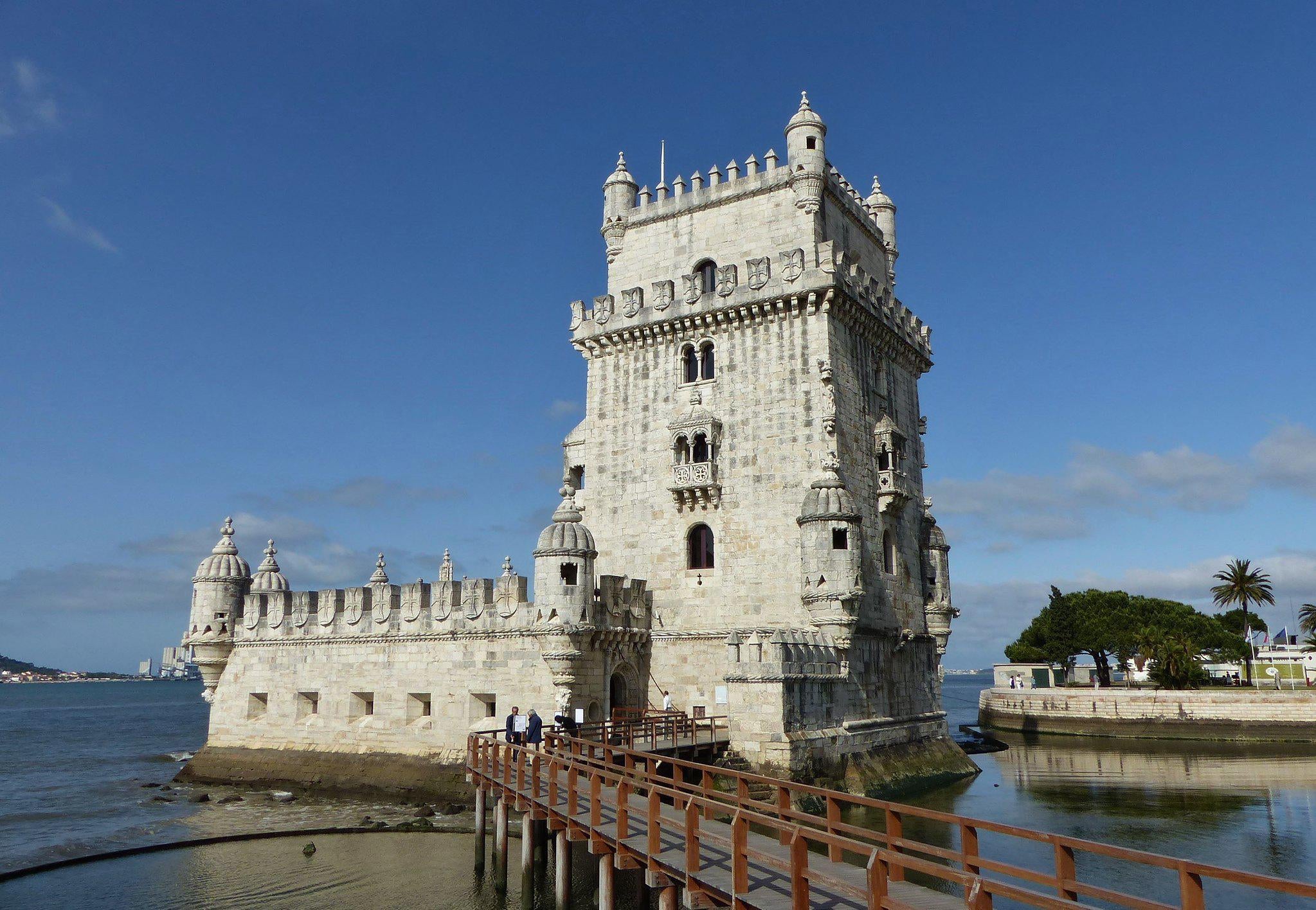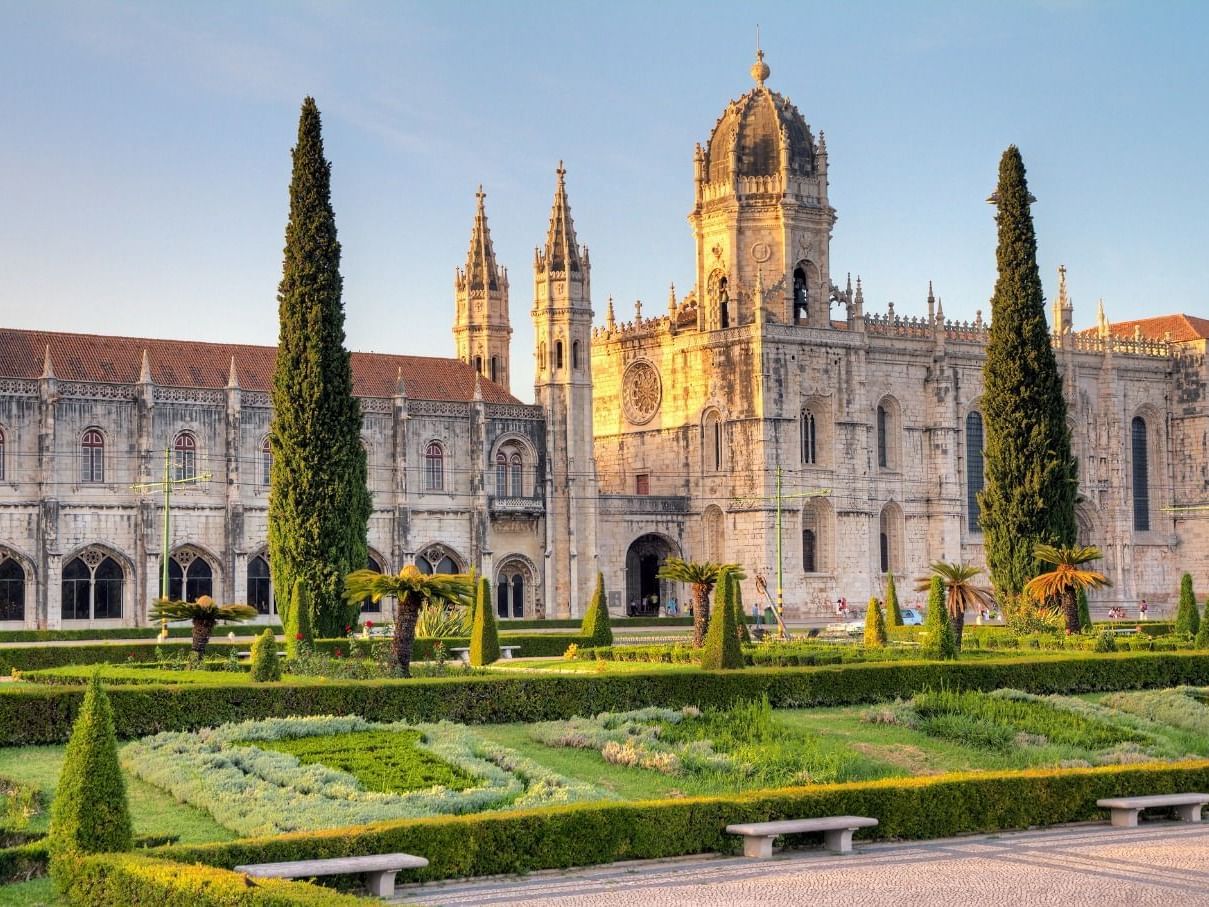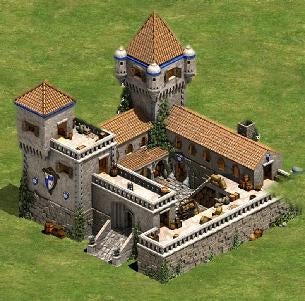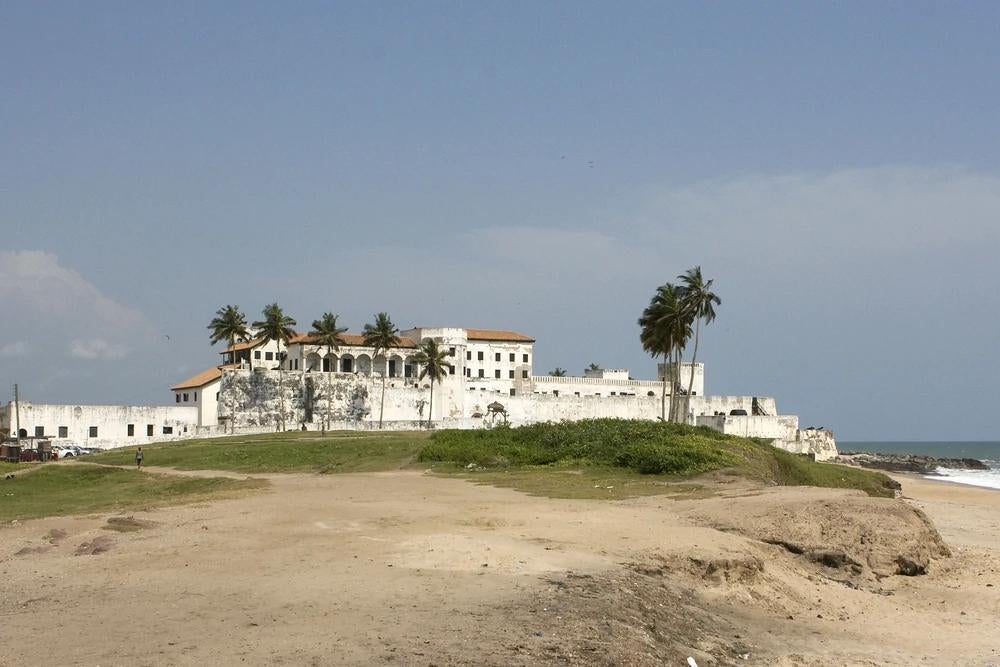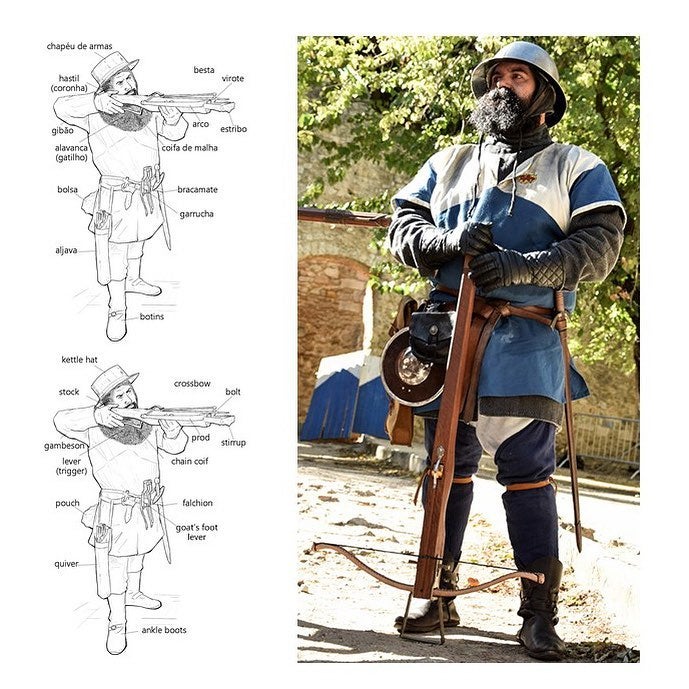Portugese Empire
Portugal
Feitorias, Armed Trade, NavyDifficulty: 3/3Bonuses
- Traders and Tradeship has ranged attacks. (Arrows/Crossbow/Handcannon)
- Docks construction time reduced by 50%.
- Docks upgrade costs reduced by 40%.
- Villagers drop off 10% more wood.
- Unique Building: Feitoria
- Unique Unit: Caravel
- Unique Unit: Besteiros (replaces Crossbowmen)
- Unique Unit: Man-of-War (replaces Carrack)
Trade Network: Feitorias can be connected via traders, traders passing by will cause Feitorias to generate additional goods, Wood, Stone, and Food (10% of the trader’s gold value)
Unique Landmarks Feudal:
- Convent of Christ: Is able to recruit Knights and Besteiros with 100% faster production speed.
- Alcobaça Monastery: Functions as a Monastery and resource drop-off point. Farms produces within its influence cost no wood. Villagers drop off 10% more food.
Castle:
- School of Navigation: Caravel sight range increased. Able to research Unique upgrades.
- Guimarães Castle: Functions as a keep, is able to recruit all units, built within Feitoria influence zone, it is able to double produce units.
Imperial Age:
- Lisbon Arsenal: Can Produce Handcannoners, Bombards, Culverins and Rebalderquins for 50% reduced cost and production speed.
- Belém Tower: Functions as a Feitoria with all upgrades, except for the ability to produce ships. Feitorias now have double the hitpoints and take 33% less damage. Replaces Arrow attack with Crossbow attacks.
Wonder: Jeronimos Monastery.
Unique Buildings for Portuguese and Spanish:
- Ranch: (I, 250W): A Large compound that produces Sheep/Cattle that can be harvested for food. Can garrison up to 4 villagers to increase its production rate. Also function as food resource drop off point. Is able to boost production speed of nearby stables.
Unique Buildings:
- Feitorias (II, 300W 150S): Can Garrison up to 10 units and be upgraded with emplacements. Traders passing by Feitorias influence zone will make Feitorias generate additional resources.Feitorias can be build on land and on shores. But can not be built within 40 tiles of another Friendly Feitoria. Ranches built within Feitora influence boosts its production rate to max. Not requiring villagers to garrison the ranches.
Note:
Feitorias require Stone to repair. Feitorias can be upgraded into different versions:
- Customs (100W 50G): Resources generated by passing traders increased by additional 40%.
- Headquarters (100W 50F): Allows Feitorias to produce all military units. Having more than 20 active traders reduces cost and production time of units produced by 30%
- Warehouse (100W 50S): Feitorias double as a dock and resource drop off point, can repair and produce naval units and villagers, Feitoria must have been built on shores. Can also Garrison naval units.
Unique Units:
- Caravel (I, 75W 75G): A fast and light ship with extra vision range. Can transport up to 2 units. Gains 50 gold for uncovering Neutral Traders and Sacret Sites.
- Besteiros (II, 60F 20G): Early and cheaper crossbowman that can also be trained at Feitorias. Grants Garrisoned Crossbow attacks to buildings they Garrison (replacing arrows)
- Man-of-War (IV, 550W 550G): A warship of immense strenght. Armed with extra guns. Also able to double as a Transport ship.
Technologies
- Improved Navigation (II, 75F 75G): Movement speed of naval units increased by 20%. Upgraded at Docks
- Armed Caravels: (II, 100W 50G): Caravel can now be upgraded with a frontal Ballista. Upgraded at Docks.
- Merchant Explorers (II, 200W): Caravels can be turned into tradeships for a reduced cost. Unique upgraded at Docks.
- Cartography (III, 500G):
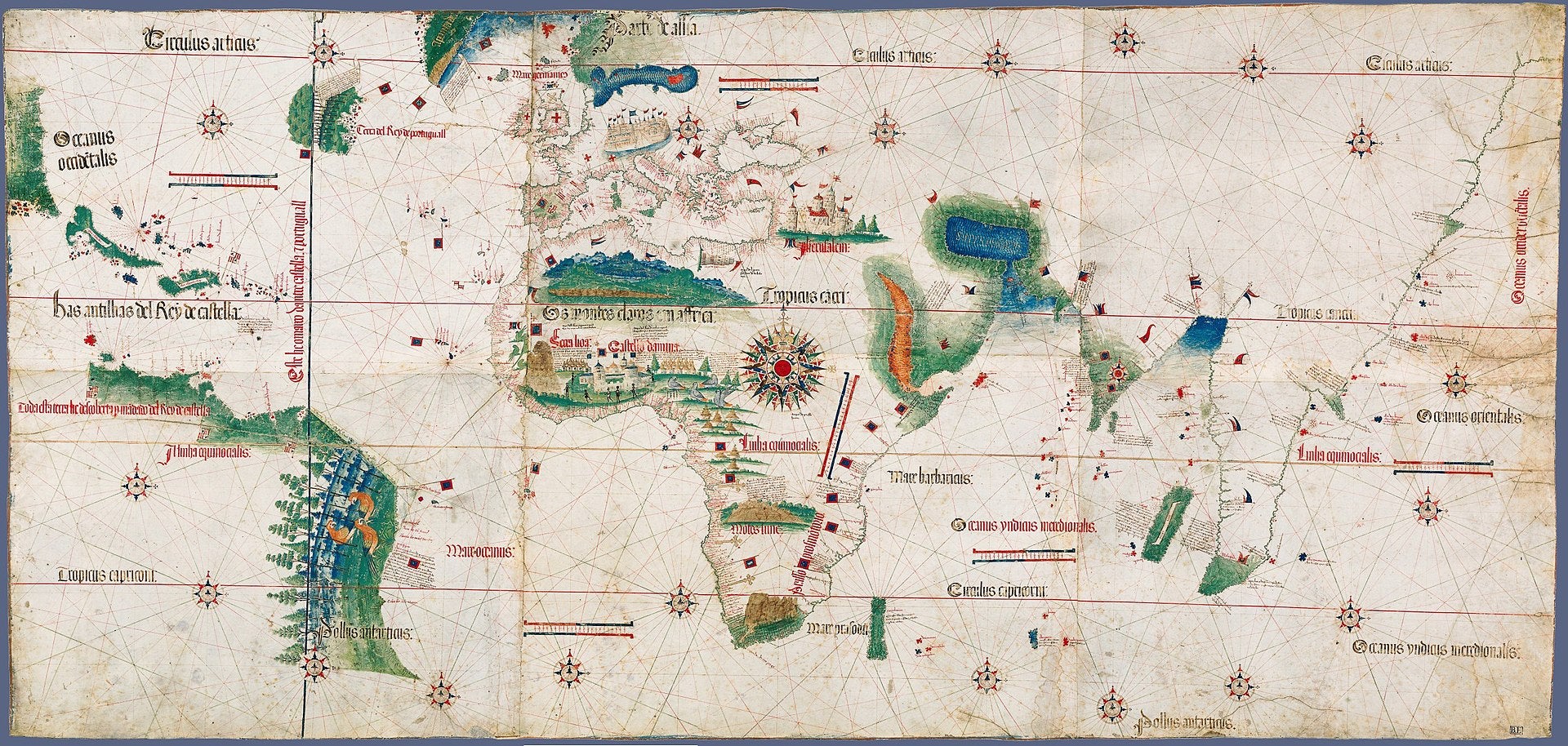
Entirety of the map is now explored. Unique Upgrade at School of Navigation.
- Chaser Guns (III, 100S, 200G): Caravel can now be upgraded with a single frontal cannon. Unique upgrade at School of Navigation
- Swivel Guns (III, 200S 300G):
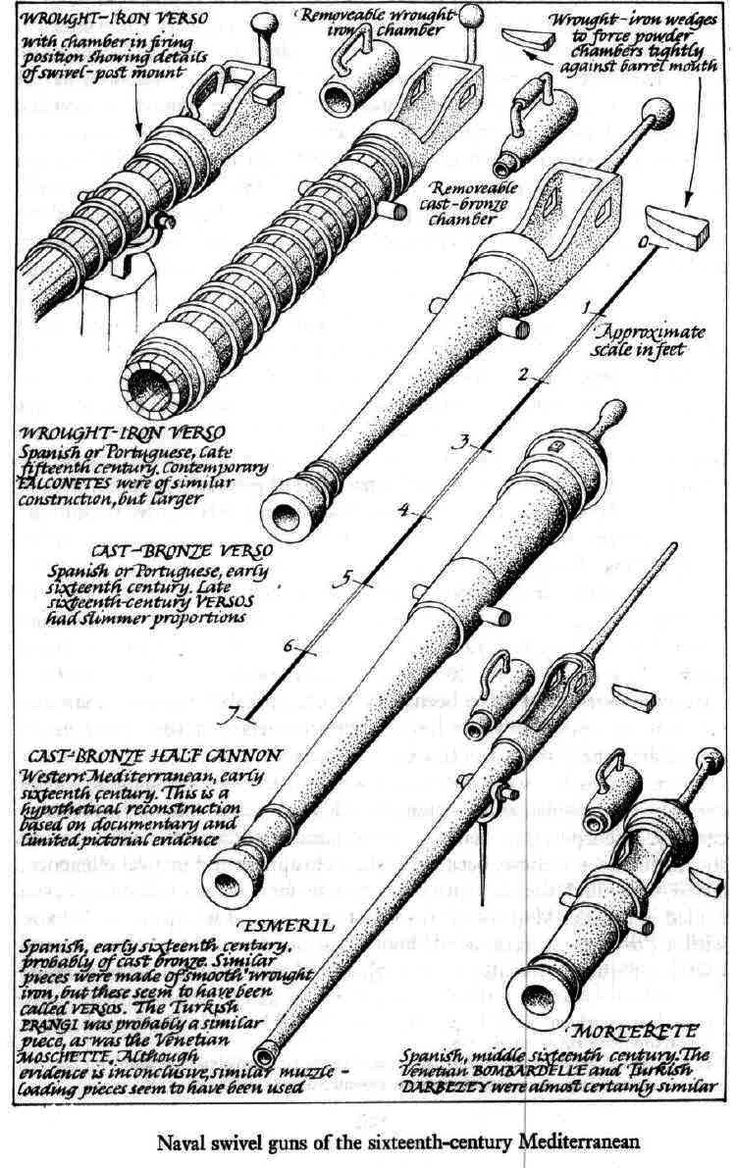
All naval units, and defensive emplacements gets additional Handcannon attack. Upgraded at Blacksmith
- Fidalgos (III, 150F 250G):
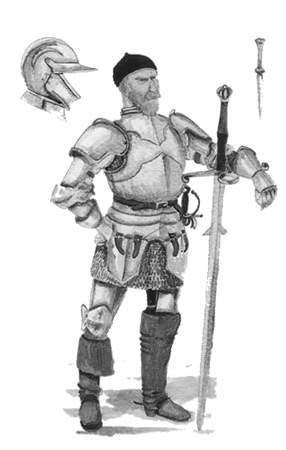
Men at Arms grants 15% attack and movement speed to nearby infantry and siege units. Upgraded at Barracks.
- Montante (III, 100F 200G):
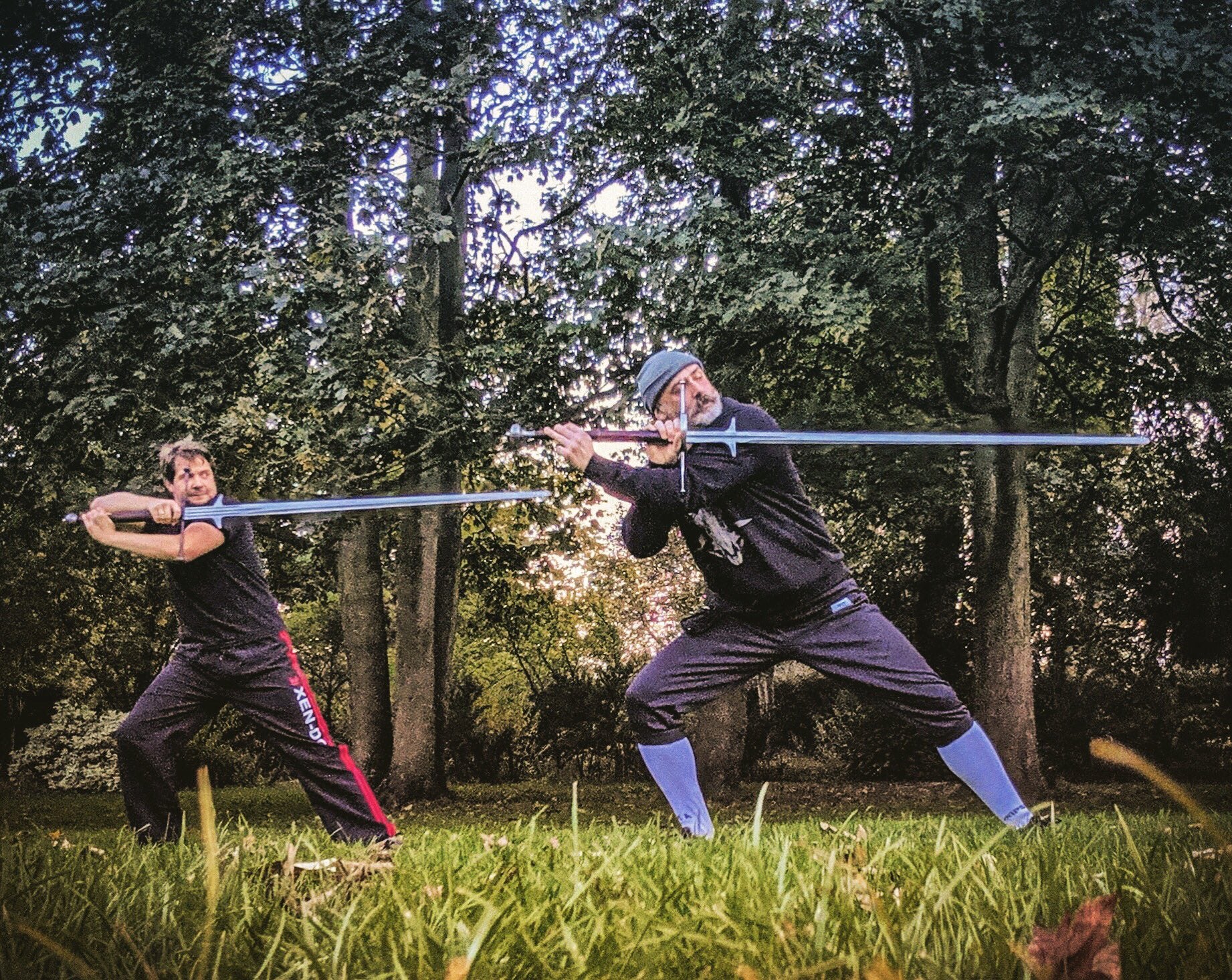
Men at Arms are armed with a 2 handed Montante, gaining +2 damage on attacks. When out of combat for more than 3 seconds, their 2 first attacks does cleave damage. Upgraded at Barracks.
- Naval Guns (IV 400S 600G): Tradeships now armed with cannons instead of arrows/crossbow/handcannon. Unique Upgrade at School of Navigation.
- Breech Loaders (IV 500S 500G):
Naval and Emplacement-Handcannon attack speed increased by 100% (double the firerate). Upgraded at University.
- Espingardeiros (IV, 300F 700G): Increases hitpoints of Handcannoneers by 20%. Upgraded at Archery Range
- Bombardeiros (IV 300F 700G): Gunpowder Siege and Naval units gains +1 range. Upgraded at University or School of Navigation.
- Bimetallic Canonball (IV 500G):
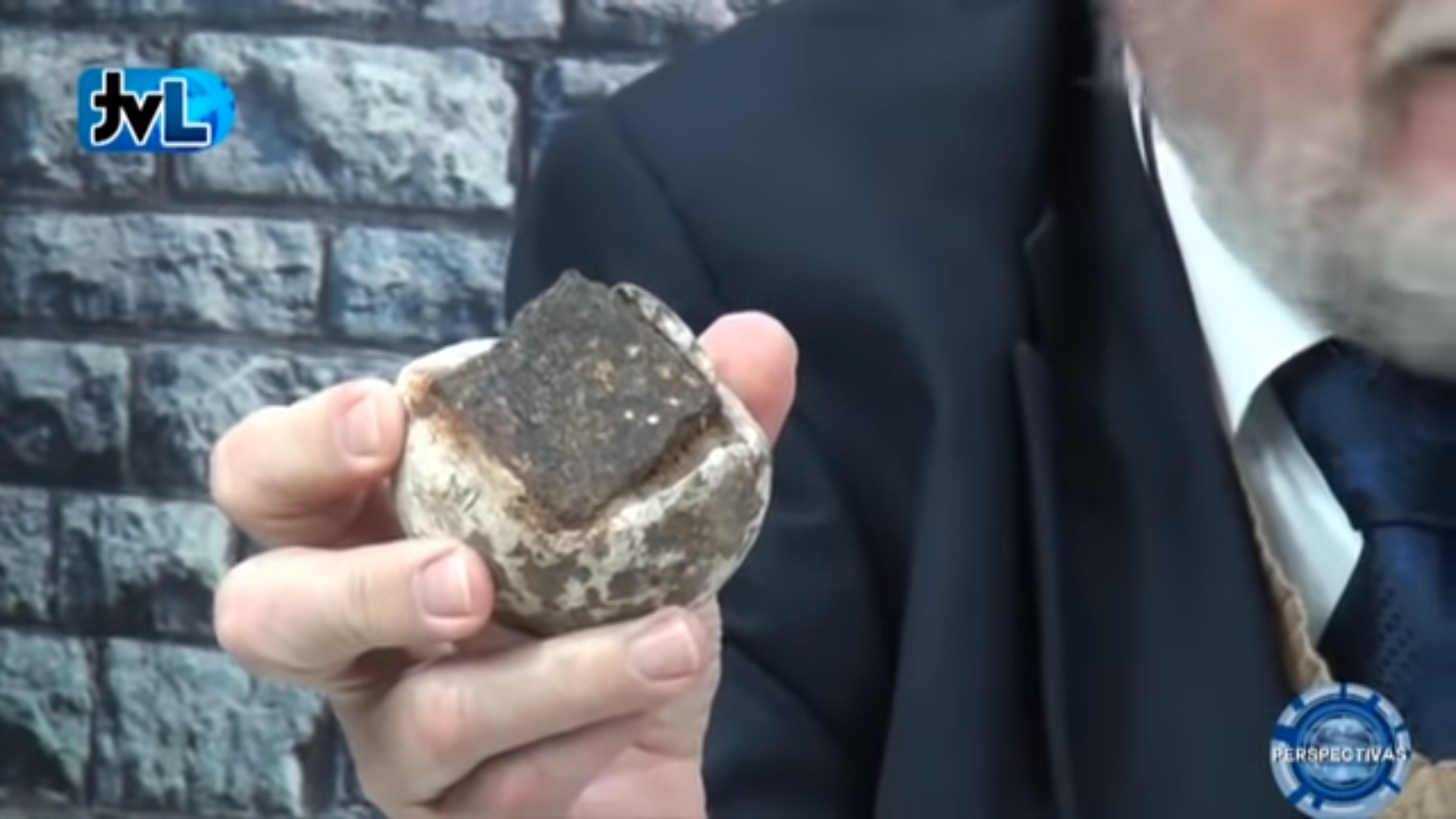
Unlocks an Ability to Man of War, Culverins and Bombards. Next attack has +3 range. Has a 25% chanse causing the next shot reload time to be increased by 200%. Unique Upgrade at School of Navigation.
Additional Notes:Architecture of Portugal mimics that of spain quite a bit. Due to shared culture and history of reconquista. They are also heavily influenced by the Arab-Architecture left behind by the Al-Andalusians. As well as introducing more contemporary architecture of gothic style that predominated europe, however it does start differing out from their Spanish cousins in the early half of the 16th century. As the Portugese empire started to get a foothold, bringing in a lot of maritime influences.The Portuguese for their timeline would start off with the Portuguese Romanesque style architecture. Where their next age up introducing Gothic influences to their architecture.Developting into the Manueline-Style, also known as Portuguese Late Gothic. Reaching the final age in the Portuguese Renaissance architecture.
Naval units:
Portoguese navy has a long history, and were usually on the cutting edge, being in the unique position to exploit knowledge from both the European counterparts and Muslim knowledge.
Thus developing their signature Caravel ships that helped Portugal becoming the first global empire, despite just having the fraction of the population compared to all its neighbours.They were also the first to put professional trained soldiers on ships, so that their sailors also doubled as a military force, ontop of being the first to start deviating away from Bording combat that was common of that time, by equipping their vessels with the latest technology of breech loading guns and cannons, developing doctrines of blasting their enemie ships into pieces before even getting close to engage in a boarding combat.Their ship Designs would be similar to the European ones, but with their own distinct differences.Their Caravels are very recognizable with their triangle sails, while their Galleys would be distinguishable with the Templar cross across their sails.
Their later Warships, Man of War commonly known as Nau (Carrack), would be really distinguishable with extra amount of cannons with larger castle structures in the front and back, also loaded with cannons.
Language progression: The Portuguese language originated from Vulgar Latin brought in by the romans. During the invasion of the Germanic Tribes of the Suevi and Visigoths it started brinigng in Germanic influences.During the early 8th century, the Moorish conquest of the Iberian brought in a lot of Arabic linguistical terms. Modern portuguese having between 400-800 words of arabic origin.
It was then starting to become Proto-Portuguese during the early phases of the Reconquista than then developted into Old Portuguese known as Medieval Galician.In the 13th century, Galician-Portuguese had its own literature and started to split into two languages. There is still a debate wheter the Galician and Portuguese are nowadays varieties of the same language, much like American English vs British English.
Landmark references:
The convent was founded by the Order of Poor Knights of the Temple (or Templar Knights) in 1118. Its construction continued until the final part of the 12th century with the construction of the oratory, in one of the angles of the castle, completed by the Grand Master D. Gualdim Pais (some time around 1160).
Around 1190 it was encircled and resisted the armies of caliph Abu Yusuf al-Mansurwho was successful in taking strongholds in the south it was.
During the second quarter of the 13th century, Tomar was transferred into the control of the Templars, becoming its seat. The castle became an integral part of the defence system created by the Templars to secure the border of the young Christian Kingdom against the Moors, which at the time occupied the area. Following the dissolution of the Templar Order, on 14 March 1319, and following the request of King Denis of Portugal, Pope John XXII instituted the Order of Christ. The seat of the former Knights Templar was converted in 1357 into the seat of this new order.
The Alcobaça Monastery is one of the first buildings associated with the Cistercian Order in Portugal. It was founded in 1153 as a gift from the first Portuguese king, Afonso I or Afonso Henriques (1112–1185) to Bernard of Clairvaux, following the king’s conquest of the city of Santarém from the Moors in March 1147. The foundation of the monastery was part of a larger strategy by King Afonso I to assert his authority and promote the colonisation of lands recently conquered from the Moors during the Reconquista.
Construction began in 1178, some 25 years after the first Cistercian monks settled in the Alcobaça region. Initially, the monks lived in wooden houses, and would only move to the newly built monastery in 1223. The church proper wasn’t completed until 1252.
Church and adjacent monastery are the earliest examples of truly Gothic architecture in Portugal, and the church itself was the largest in Portugal at the time of its completion.The final touch in this large mediaeval ensemble was given in the late 13th century, when King Denis I (1261–1325) ordered the construction of the Gothic cloister, also known as the Cloister of Silence.
School of Navigation:
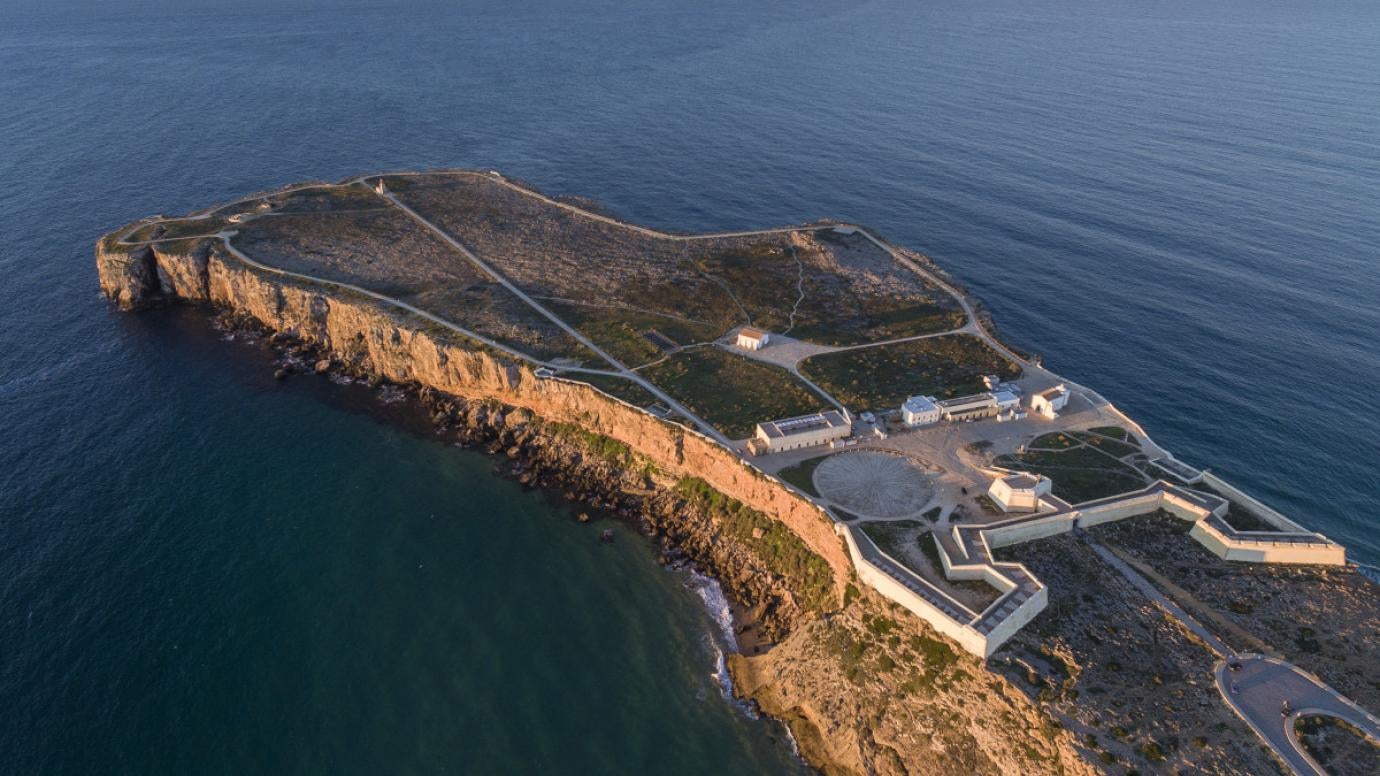
Rumored place for the School of Sagres
Prince Henry’s school of navigation was founded in 1418 and was located in Sagres, Portugal. Before the establishment of this school, there had been no expeditions into the Mors, or “The Sea of Darkness”.Prince Henry had sent expeditions into “Mors” the personification of death in Roman mythologywhich had never been done before (sailors and navigators had been afraid to sail into the mors as it was thought to be home to many monsters and boiling water from the equator).
Now the School of Sagres is debated to be a “myth” or not, as critical view of this claims that Sagres was simply a meeting place for sailors and scientists to exhange information and technology. And that most of these “schools” were done onboard ships. Due to the lack of Archeological and documentary support of the supposed “School” of Sagres.
But there is no denial that Portugal was in the lead of Maritime research and developtment, and anything that would benefit their Maritime endevour. So definitely forms of schools were estabelished. Have it been done at the royal estates of Prince Henry the Navigator, or onboard one of their many ships or one of the estates founded by the Templars.
It was built under the orders of Mumadona Dias in the 10th century to defend the monastery from attacks by Moors and Norsemen.The castle is a military fortification grounded primarily in the late Romanesque period, and elaborated during the early Gothic epoch of Portuguese architecture.
One of the largest of the time, was not only a depot of imported weapons, but was, since its early beginnings, a technical school for high quality army equipment. Manuscripts reveal the existence of German, Dutch, French, Italian and Spanish masters of the art of gunfounding and barrel forging. Foreign gunmakers wishing work in Lisbon, enjoyed special privileges such as large tax reductions. In the early 16th century, the German artillerymen in Lisbon were so large in number that they formed and organized the Brotherhood of Saint Bartholomeus, for which they erected their own church. This church is still in existence today. In the Battle of Alcacer-Quibir, 1578, some 3000 German artillery men lost their lives fighting for the King of Portugal
Officially the Tower of Saint Vincent is a 16th-century fortification located in Lisbon that served as a point of embarkation and disembarkation for Portuguese explorers and as a ceremonial gateway to Lisbon. It was built during the height of the Portuguese Renaissance, and is a prominent example of the Portuguese Manueline style.
In the late 15th century, King John II had designed a defence system for the mouth of the Tagus that depended on the fortresses of Cascais and São Sebastião (or Torre Velha) in Caparica on the south side of the river. These fortresses did not completely protect the river’s mouth, and further protection was required. The project was started on a basaltic rock outcrop a short distance from the riverbank, using some of the stone being collected to build the Monastery of Santa Maria de Belém.
The tower was designed by military architect Francisco de Arruda, as construction progressed, a man-of-war called the Grande Nau (Great Ship), a heavily armed, 1000–ton ship continued to guard the estuary at the mouth of the Tagus until the fort’s completion. In 1571, Francisco de Holanda advised the monarch that it was necessary to improve the coastal defences in order to protect the kingdom’s capital. He suggested the construction of a “strong and impregnable” fort that could easily defend Lisbon and that the Belém Tower “should be strengthened, repaired and completed…that it has cost so much without being completed”. D’Holanda designed an improved rectangular bastion with several turrets.
In 1580, after a few hours of battle, the garrison stationed in the tower surrendered to Spanish forces under the command of the Duke of Alba. After this defeat, the dungeons of the tower served as a prison until 1830. It was also during the last quarter of the 16th century that the construction of the Philippine Barracks began. A rectangular two-storey space was constructed over the bastion, giving the tower the visual profile that it has retained to the present, with sculpted crosses of the Order of Christ and domed turrets.
Wonder:
A former monastery of the Order of Saint Jerome near the Tagus river in the parish of Belém, in the Lisbon Municipality, Portugal. It became the necropolis of the Portuguese royal dynasty of Aviz in the 16th century The Jerónimos Monastery is one of the most prominent examples of the late Portuguese Gothic Manueline style of architecture in Lisbon. It was erected in the early 1500s near the launch point of Vasco da Gama’s first journey, and its construction funded by a tax on the profits of the yearly Portuguese India Armadas.
The Jerónimos Monastery replaced the church formerly existing in the same place, which was dedicated to Santa Maria de Belém and where the monks of the military-religious Order of Christ provided assistance to seafarers in transit.The harbour of Praia do Restelo was an advantageous spot for mariners, with a safe anchorage and protection from the winds, sought after by ships entering the mouth of the Tagus
Unique Building:
- Health: 2500
- Attack: 6 Ranged (Arrow Garrisoned); 15 Ranged (Crossbow Garrisoned) +9 vs Heavy Armor; 8 Ranged (Arrowslits) +25 vs Ship; 25 Ranged (Swivel Gun) +25 vs Ship; 60 Ranged (Springald) +50 vs Ship; 85 Siege (Cannon) +85 vs Ship
- Rate of Fire: 2.50s (Garrisoned); 1.88s (Arrow slits); 3s (Swivel Guns); 6.25s (Springald); 7s (Cannon).
- Range: 6 Tiles (Garrisoned); 8 tiles (Arrow slits); 8 tiles (Swivel Guns); 9 tiles (Springald); 10 tiles (Cannon)
- Armor: 0
- Pierce Armor: 50
- Fire Armor: 0
Note:Feitorias can have all the emplacement upgrades (Similar to a keep)Swivel gun attacks are only unlocks after research of Swivel Guns at blacksmith has been done.Garrisoned Arrow attacks gets replaced by Garrisoned Crossbow attacks if Beisteiros are Garrisoned instead of other units. Unique Unit:
Caravel:

Historical “Azulejo” ceramic tiles, ca 1775 depicting caravels on the Portuguese voyages of discovery. Oeiras, Lisbon, Portugal.
- Health: 400
- Attack: 50 Ranged (ballista) +100 vs Attack Ship; 100 Ranged (cannon) +50 vs Buildings
- Rate of fire: 3.88s (Ballista); 4.35s (Cannon)
- Range: 5 tiles (Ballista); 7 tiles (Cannon)
- Armor: 0
- Pierce Armor: 3
- Speed: 1.56 tiles/s
Note:
Caravel does not have ranged attacks in Dark Age, and serves only as a early form of scout/transport.Weapons are Gained through Research, Once research is unlocked, it can choose to upgrade between Ballista from Feudal Tech upgrade, or Cannons through Castle Tech upgrade.
- Ballista upgrade cost 35W and 15G.
- Cannon upgrade cost 65W and 35G.
- Health: 65/80/95
- Attack: 9/12/15 ranged (Crossbow); +6/+9/+11 vs Heavy Armor.
- Rate of Fire: 2 seconds
- Range: 5 tiles
- Armor: 0
- Pierce Armor: 0
- Speed: 1.13 tiles/s
*Note:*This unit functions as a regular crossbowman that can be built in Feudal Age.When garrisoning this unit in a defensive structure, it grants Garrisoned Crossbow attacks instead of regular Arrow attacks.
Man of War:
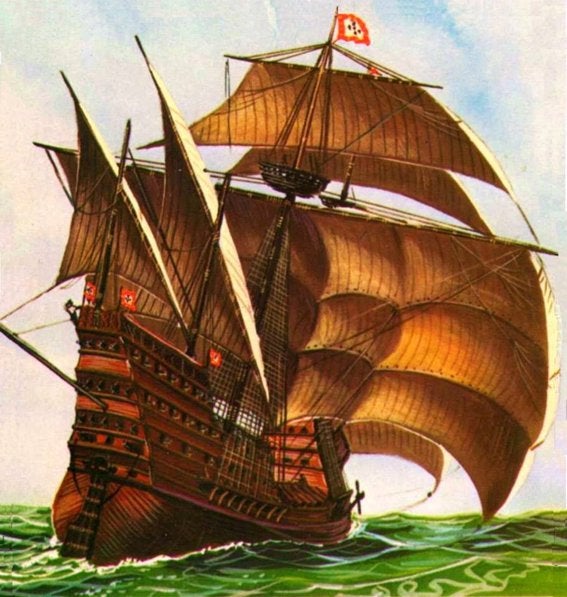
São João Baptista, the most powerfull warship at the time armed with 366 cannons, 600 musketeers, 400 swodsmen and 300 gunners. And a steel carving at the bow to break through chains used to block naval vessels.
- Health: 1800
- Attack: 70 Ranged (8 on each side) (Cannon) +50 vs Buildings; 25 Ranged x 3 Burst attack (Swivel Gun)
- Rate of fire: 4.5s (Cannon); 3s (Swivel Guns);
- Range: 8 tiles (Cannon); 5 tiles (Swivel Guns)
- Armor: 0
- Pierce armor: 5
- Speed: 0.88 tiles/s
Note:
Can transport up to 16 units.
Swivel Gun attacks are only available after the Swivel Gun upgrade has been unlocked. Swivel Gun attacks have 360 degree firing arc, and is also able to fire on the move.
Man of War is also known as Nau or Grande Nau. However, Nau is synonymous to Carracks and has the same meaning. Man of War was chosen because it specifically means a very heavily armed warship. And the Portuguese were famous for their even heavier armed Warship, there is a reason why an Extremely deadly Jellyfish got named Portuguese Man o’ War.Also I gotta admit the name just sounds more badass.
***Write-up:***Oh boy, I took some time with this one. As I do with every Civ I feel.But this was mostly due to my own laziness. I had Vacation and I usually think mostly of Civ designs when I’m at work. Being Bored. Lol.
Regardless, another thing that came to my mind was the latest patch and their announcement of complete Naval rework for Season 3. So I was becoming unsure if I was going to release this civ design now, based on the current naval design, or if I should hodl until Season 3 and more info on the Naval Rework has been announced.
Regardless, I decided to go for it now, as I’m most likely going to do an overhaul of all my Civ Designs once Naval rework is out.
Because the Navy is cooler than boring land units. Yes, I said it. I am Navy Biased. I served in the Navy so you can’t blame me!
When It comes to the Portuguese and How I intended for them to be played, is a heavy emphasis on Trade. Hence the Feitoria system, and Feitoria sorta doubling as early but weaker Keep. Somewhere the strength between a Keep and a Towncenter. Also, I did not mention them as a Gunpowder civilization, due to them lacking unique gunpowder units (besides ships that go under the Navy). However, They are a gunpowder civilization, as they have a lot of upgrades related to gunpowder units and defenses in form of Swivel Guns, which the Portuguese were very famous/infamous for using effectively, due to their breech loading mechanism. Also, I did not give them the unique “Organ Gun” from earlier games, as this is in all intentions, the Rebalderquin. Which the Portuguese would have access to. Instead, I also wanted to give them a Feudal unique unit, in form of an early-crossbow man. Making them more unique, and being able to play more on the defensive style. Which they are going to need when keeping Map control, and a form of the early counter towards pesky knights roaming around and might threaten their trade.
Meanwhile, their Navy game is where their strength is at. While I am aware naval rework is coming out, I based the stats on the current navy game. One has to also remember, that there is going to be a major price adjustment on the Naval rework for season 3. The Caravel is intended to function more like a scout unit, and can, later on, be upgraded with weapons. It has room to transport 1-2 units, such as a scout and a villager in order to try to expand early and secure trade routes at sea. And the Man of War takes on the role of more of a capital ship to secure naval dominance. While they are certainly incredible strong with the current naval mechanics. With the upcoming season 3 changes, there is going to be more direct counter units to keep in mind. But also the fact that these ships are Very expensive, and yet not as tanky as a Baochuan. Being more of an in-between of a Carrack and Baochuan with better offensive capabilities.
For the ground combat, I wanted Portugal to be able to have Early knights in order to establish map control, but also thematically represent the Templars/Crusaders that helped establish the Portuguese kingdom. The Portuguese should be capable fighters on land as well as on sea. While they made use of Tercio’s, I gave the Tercio to the Spanish as they are the core of Iberia and the Tercio really was something that came out of the Iberian Reconquista. However, that does not mean they can not achieve a similar effect. The Man at Arms will provide similar beneficial boons to unit formations through the Fidalgo upgrade, but with added flexibility. The Man at Arms is also unique in the fact they can get the Montante. I did not want them to be an armored version of a Landsknecht.
And being a HEMA practitioner myself in Longsword, I’ve also had some courses in actually using this type of weapon. The combat style of the Iberian Montante was actually more oriented toward a Defensive role. This is why I give them the Cleave bonus if the Man at Arms has been out of combat for more than 3 seconds for their first attacks. And consider Man at Arms are going to be mainly used Defensively among other units in order to provide them the Fidalgo boon, a Tercio Formation consisting of Man at Arms, Spears and Handcannoneers should be rather formidable for the Portuguese. Being able to dash out some cleave damage against an enemies charge.
For those interested in how one used Montante defensively:
The style one would use the Montante was quite often to rotate the blade in front of you, sort of making a shield in front of you consisting of a blade rotating. When used in a line formation, this was very effective in urban combat where you could block off alleys from approaching enemies, where the montage blade would quite often outreach the opponent’s weapons. Once engaged in combat, the blade would serve more akin to the fighting style of a Spear, focusing on stabbing attacks rather than swinging, outreaching the opponent’s weapons most of the time, and in cases of fighting against spear infantry, one would lean more into Landsknecht style by deflecting their spears to the side and delivering a downwards slicing blow against their necks, or in cases of heavily armored spears/halberdiers, a shove and then a half-sword stab through a weak spot (eyeslits/armpits).
Next up: The country that loves Orange, but for some reason doesn’t even have the color Orange in their flag. (Why!?)
If you enjoyed this and are interested in reading my other Civilization concept here is a list:
Southeast Asia:
The Majapahit Empire
The Dai Viet Dynasties
The Burmese Empire
The Champa Kingdoms
The Thai Kingdoms
The Khmer Empire
East Asia:
The Korean Dynasty
The Japanese Shogunate
Europe:
The Norse Vikings
The Scottish Kingdoms
The Ottoman Empire
The Spanish Empire
The Portuguese Empire (You are Here!)
The Dutch Empire

